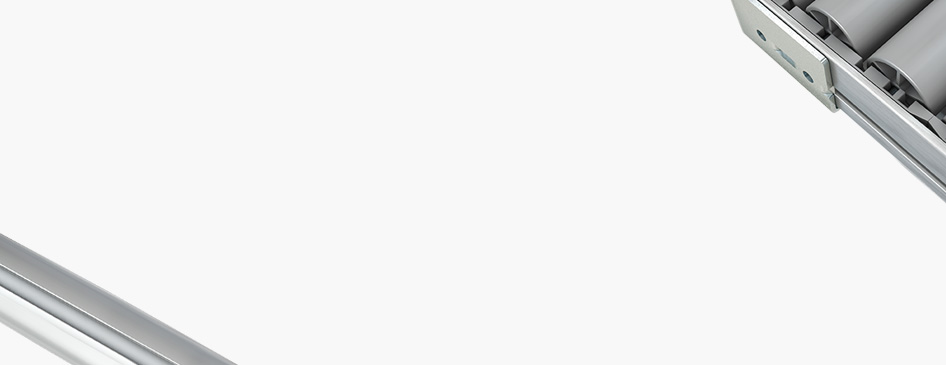
Choose one
or multiple languages
0,1,1
- German
- English
- Chinese
- Spanish
Mass-spring-damper system

A mass-spring-damper system comprises masses, mechanical springs and parallel attenuators. The system can store potential and Kinetic energy.
Mass-spring-damper systems are primarily intended to reduce the transmission of vibrations and structure-borne noise. The flexible elements (springs) ensure the masses are decoupled in terms of Oscillation transmission. Mass and spring dynamics must be coordinated for this purpose.
The spring has a spring constant, a length at rest and a decay constant. If the spring is in the rest position, the system is also in its original position. If a mass is moved, the spring accumulates Potential energy that is minimized through displacement of the other mass points. The attenuator ensures that the system does not continue to oscillate after deformation but returns to its rest position. Weak, subcritical Damping leads to oscillation decay, while critical/supercritical damping leads to Creep decay.
The mass-spring-damper system is often used as an equivalent system if dynamic behaviour is to be reproduced by approximation but with sufficient precision. This applies, for example, when describing the rotary oscillation behaviour of machine systems that are described using a mechanical equivalent system with masses, Torsion spring and rotational damping. As long as the deformation of the entire system is in the linearly elastic range, a mass-spring-damper system can be described in full by equations of motion.
Masse-Feder-Dämpfungs-System

Ein Masse-Feder-Dämpfungs-System besteht aus Massen, mechanischen Federn und parallelen Dämpfungsgliedern. Das System kann potentielle und Kinetische Energie speichern.
Masse-Feder-Dämpfungs-Systeme sollen vor allem die Übertragung von Vibrationen und Körperschall verringern. Die elastischen Elemente (Federn) sorgen für eine schwingungstechnische Entkopplung der Massen. Dabei müssen Masse und Federdynamik aufeinander abgestimmt werden.
Die Feder hat eine Federkonstante, eine Ruhelänge und eine Abklingkonstante. Sofern sich die Feder in Ruhelage befindet, ist auch das System in Ausgangslage. Wird eine Masse bewegt, liegt an der Feder Potentielle Energie an, die durch Verschiebung der anderen Massepunkte minimiert wird. Das Dämpfungsglied sorgt dafür, dass das System nach der Deformation nicht weiter schwingt, sondern zurück in seine Ruhelage findet. Eine schwache, unterkritische Dämpfung führt dabei zu schwingendem Abklingen, eine kritische bzw. überkritische Dämpfung zu kriechendem Abklingen.
Das Masse-Feder-Dämpfungs-System wird häufig als Ersatzsystem herangezogen, wenn dynamisches Verhalten näherungsweise, aber hinreichend genau wiedergegeben werden soll. Dies gilt etwa bei der Beschreibung des Drehschwingverhaltens von Maschinenanlagen, die durch ein mechanisches Ersatzsystem mit Massen, Drehfeder und Drehdämpfung beschrieben werden. Solange die Deformation des gesamten Systems im linear-elastischen Bereich stattfindet, kann ein Masse-Feder-Dämpfungs-System durch Bewegungsgleichungen vollständig beschrieben werden.
重物 -

重物 - 弹簧 - 阻尼系统是由重物、机械弹簧和并联衰减器组成的。该系统可以储存势能和动能。
重物 - 弹簧 - 阻尼系统的主要目的是减小振动和结构性噪声的传播。由于使用了柔性的元素(弹簧),从而可以在振荡传播过程中,确保重物不再到影响。这时,在动态过程中,重物和弹簧必须互相搭配,才能实现上述的目的。
弹簧具有确定的弹簧常数,静止长度和衰减常数。在弹簧处于静止位置时,该系统将处于其原来的位置上。如果将重物移动了位置,那么,势能就会蓄积在弹簧中,同时由于其他质点发生了位移,系统的势能将保持最小。使用衰减器后,就可以确保变形后的系统不会继续振荡,并返回其静止位置。如果阻尼较弱或者是亚临界阻尼,那么系统将出现振荡衰减,而在临界/超临界阻尼的情况下,系统将出现加速衰减。
如果人们需要研究某个系统的动态行为。那么就可以使用重物 - 弹簧 - 阻尼系统作为等效系统 该系统研究,并以近似的结果,完成该系统行为的再现,而该等效系统效果仍然会具有足够的精度。例如,对于机械系统来讲,机械等效系统是可以使用重物、扭转弹簧和旋转性阻尼来完成的,而在描述该系统的旋转振荡行为时,就可以使用上述等效系统。只要整个系统的变形是线性变形,同时一直处在其弹性范围之内,重物 - 弹簧 - 阻尼系统可以完全由运动方程式来进行描述。
重物 - 弹簧 - 阻尼系统
近义词
等效系统(模型分析)
Sistema masa-resorte-amortiguador

Un sistema masa-resorte-amortiguador comprende masas, resortes mecánicos y atenuadores paralelos. El sistema puede almacenar energía potencial y cinética.
Los sistemas de masa-resorte-amortiguador tienen el propósito principal de reducir la transmisión de las vibraciones y los ruidos portados por la estructuras. Los elementos flexibles (resortes) aseguran que las masas sean desacopladas en términos de la transmisión de oscilación. Se deben coordinar las dinámicas de resortes y masas para este propósito.
El resorte cuenta con una constante de resorte, una longitud en reposo y una constante de atenuación. Si el resorte está en posición de reposo, el sistema también está en su posición original. Si una masa se mueve, el resorte acumula energía potencial que es minimizada mediante el desplazamiento de los otros puntos de masa. El atenuador asegura que el sistema no continúe oscilando después de la deformación y que regrese a su posición de reposo. Un amortiguamiento débil subcrítico genera una atenuación de la oscilación, mientras que la amortiguación crítica/supercrítica genera una atenuación de fluencia.
El sistema masa-resorte-amortiguador es a menudo usado como un sistema equivalente si el comportamiento dinámico debe ser reproducido por aproximación pero con suficiente precisión. Esto aplica, por ejemplo, cuando se describe un comportamiento de oscilación rotativo de sistemas de máquinas que se describen usando un sistema equivalente mecánico con masas, resortes de torsión y amortiguamiento rotativo. Mientras que la deformación del sistema entero está en el rango elástico lineal, un sistema masa-resorte-amortiguador puede ser descrito en su totalidad por ecuaciones de movimiento.
Sistema masa-resorte-amortiguador
